Tagged: 12 Jyotirlingas, Baidyanath, Bhimashankar, Dvadasha Jyotirlinga Yatra, Grishneshwar, Kashi Vishwanath, Kedarnath, lord shiva, Mahakaleshwar, Mallikarjun, Mamleshwar, Omkareshwar, Rameshwar, Somnath, Trimbakeshwar
- This topic has 0 replies, 1 voice, and was last updated by .
-
AuthorPosts
-
December 18, 2023 at 11:18 pm #1641Up::2
In Sanathan Dharma, Lord Shiva is one of the beloved deities among all—dvadasha, meaning 12, and Jyotirlingas are Radiant marks of Lord Shiva. It is believed that Lord Shiva existed on earth in the form of this 12 Jyotirlinga.
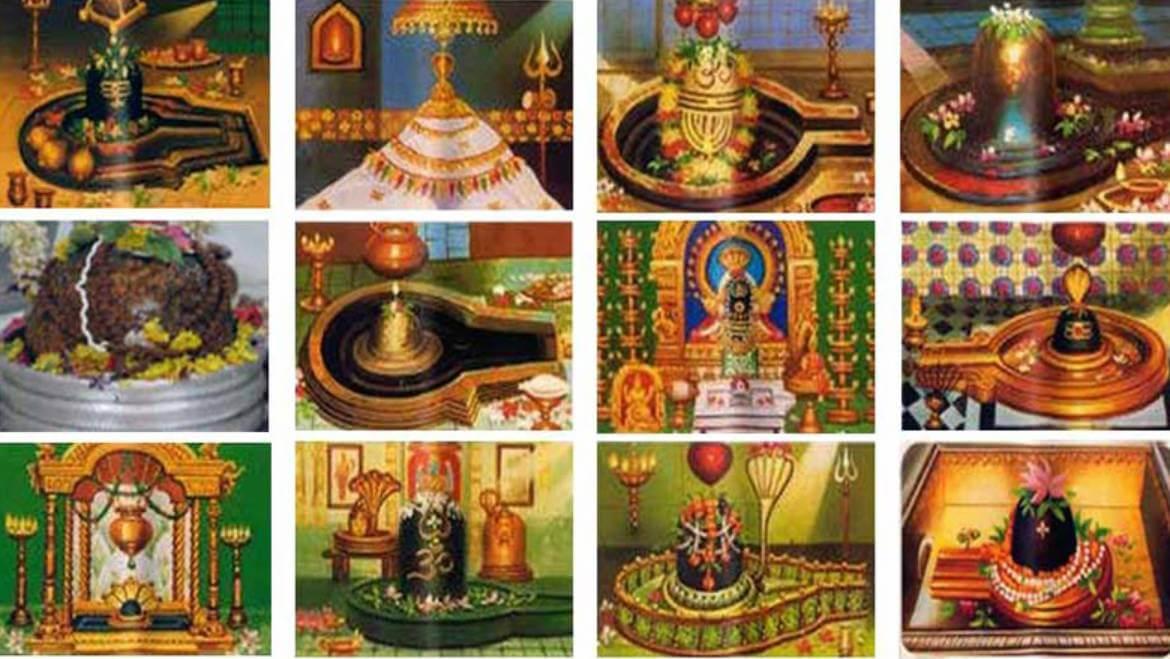
Legend associated with the Jyotirlinga
According to Shiv Puran, one day, there was a fight between Lord Vishnu and lord Brahma as to who was the supreme creator of all. In order to settle this argument, Lord Shiva portrayed himself as a massive pillar of light and asked both of them to find the end of it. Lord Vishnu was assigned the downward direction, while Bramhaji went in search of the front end. Upon returning, Lord Vishnu honestly accepted his defeat. Enlightened by this, Lord Shiva granted him the boon that he would be worshipped for eternity.
Lord Bramha, on the other hand, claimed that he found the end. Enraged by Brahmaji’s lies, Lord Shiva, appearing as a second Jyotirlinga, punished him, saying that he would never be worshipped in any of the Hindu Ceremonies or rituals. Thus, this jyotirlingas as the reality and power of Lord Shiva.
सौराष्ट्रे सोमनाथं च श्रीशैले मल्लिकार्जुनम् ।
उज्जयिन्यां महाकालम्_ॐकारममलेश्वरम् ॥१॥
परल्यां वैद्यनाथं च डाकिन्यां भीमाशंकरम् ।
सेतुबंधे तु रामेशं नागेशं दारुकावने ॥२॥
वाराणस्यां तु विश्वेशं त्र्यंबकं गौतमीतटे ।
हिमालये तु केदारम् घुश्मेशं च शिवालये ॥३॥
एतानि ज्योतिर्लिङ्गानि सायं प्रातः पठेन्नरः ।
सप्तजन्मकृतं पापं स्मरणेन विनश्यति ॥४॥
Meaning: Somanath in Saurashtra, Mallikarjunam in Shri-Shailam, Mahakaal in Ujjain, and Omkareshwar in Amleshwar.
Vidyanath is located in Paralya, Bhimashankaram resides in Dakinya, Ramesham (Rameshwaram) lies in Sethubandh, with Nagesham (Nageshwar) along the Darauka-Vana. While Vishvanath in Vanarasi, Triambakam on the Gautami River, Kedarnath in the Himalayas, and Gushmeshwar in Shivalaya (Shiwar). Those who will recite the names of these 12 jyotirlingas in the morning and evening will be free of the sins of his seven births.Where are these 12 Jyotirlingas located?
1. Somnath Temple – Gujrat
The Somnath Jyotirlinga marks the start of Dwadashi Jyotirlinga. It is located at Prabhas Patan in the Saurashtra region of Gujrat.
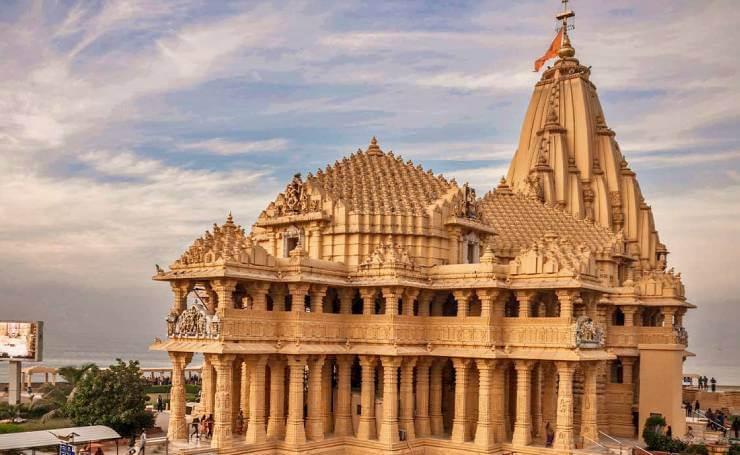
The chronology behind Somnath Jyotirling
Once, the moon god ‘Somdev’ was cursed by his father-in-law, Prajapati Daksha, for discriminating between his wives. As Chandrama only loved his love Rohini and ignored the others. According to the curse, he will lose his bright light owing to the darkness. Thus, the moon god prayed to Lord Shiva in the same place for 4000 years.
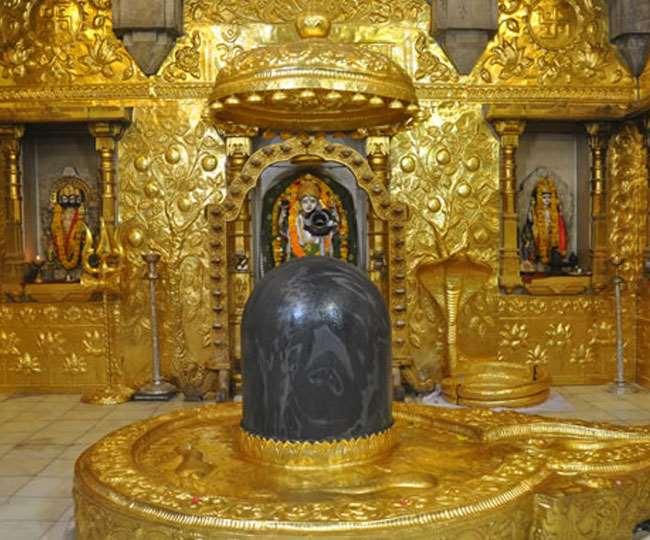
Pleased by his devotion, Lord Shiva blessed the moon god that he would regain his wane once in 15 days in a month. After recovering his brightness, Somdev built this temple in Lord Shiva’s gratitude on Lord Brahma’s instruction in 320 and 500 AD with pure gold and silver.
2. Mallikarjun Temple – Andhra Pradesh
The ancient temple of Mallikarjunam stands in pride. This temple is assumed to stand on the hills in the Srisailam. It is believed that this temple was constructed by Arjuna, one of the five Pandavas from the Mahabharata times. The interiors of the temple are beautifully carved out of the scenes from Ramayana and Mahabharata.
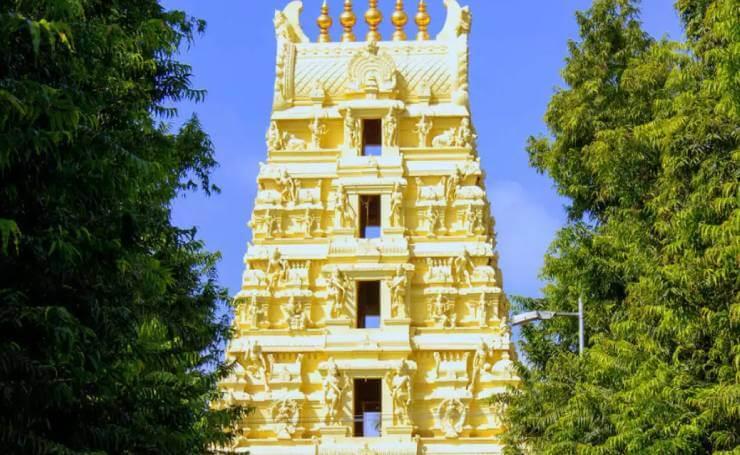
The temple has the deities of Mallikarjuna (Lord Shiva) and Bhramarambha (Goddess Parvati). It is the only temple where you can touch and feel the divine Jyotirlinga with your hands.
The chronology behind Mallikarjun Jyotirling
As per the Shiva Purana, Lord Shiva took the appearance of Jyotirlinga when he came to meet his son Kartikeya on the Krauncha Mountain.
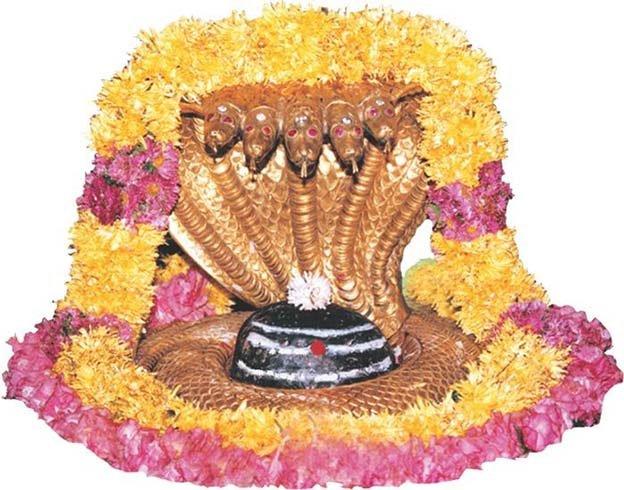
Lord Shiva, along with Goddess Parvati, came together to console Lord Murgan of his anger owing to his younger brother, Lord Ganesha’s Wedding before him.
3. Mahakaleshwar Temple – Ujjain, Madhya Pradesh
This divine Jyotirlinga is situated on the banks of the river Kshipra, apart from being one of the 12 holy Jyotirlinga. This temple is believed to be the temple of Tantra.
The Bhasma Aarti is the main highlight of the temple worth watching. This abhisheka to Lord Shiva is performed every morning with fresh ashes from the Samshan. (graveyard).
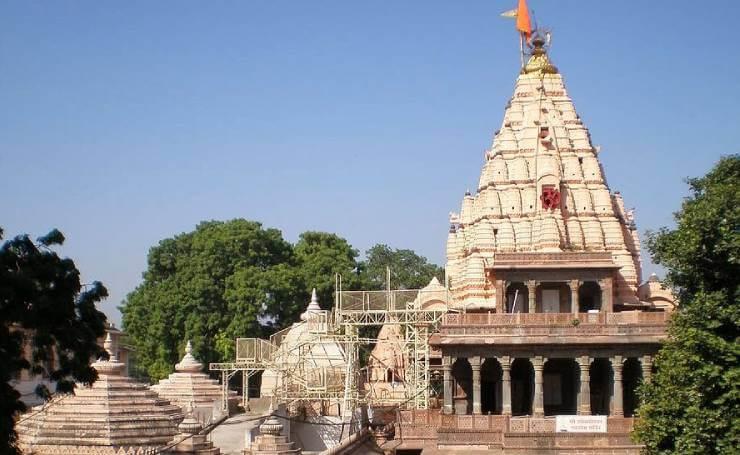
The chronology behind Mahakaleshwar Jyotirling
According to our Vedic scriptures, there are many legends associated with this temple. One such tale is that Lord Shiva appeared from the ground to kill a demon named Dushana—the Brahmins who were brutally tortured by this asura who crossed all the limitations by now.
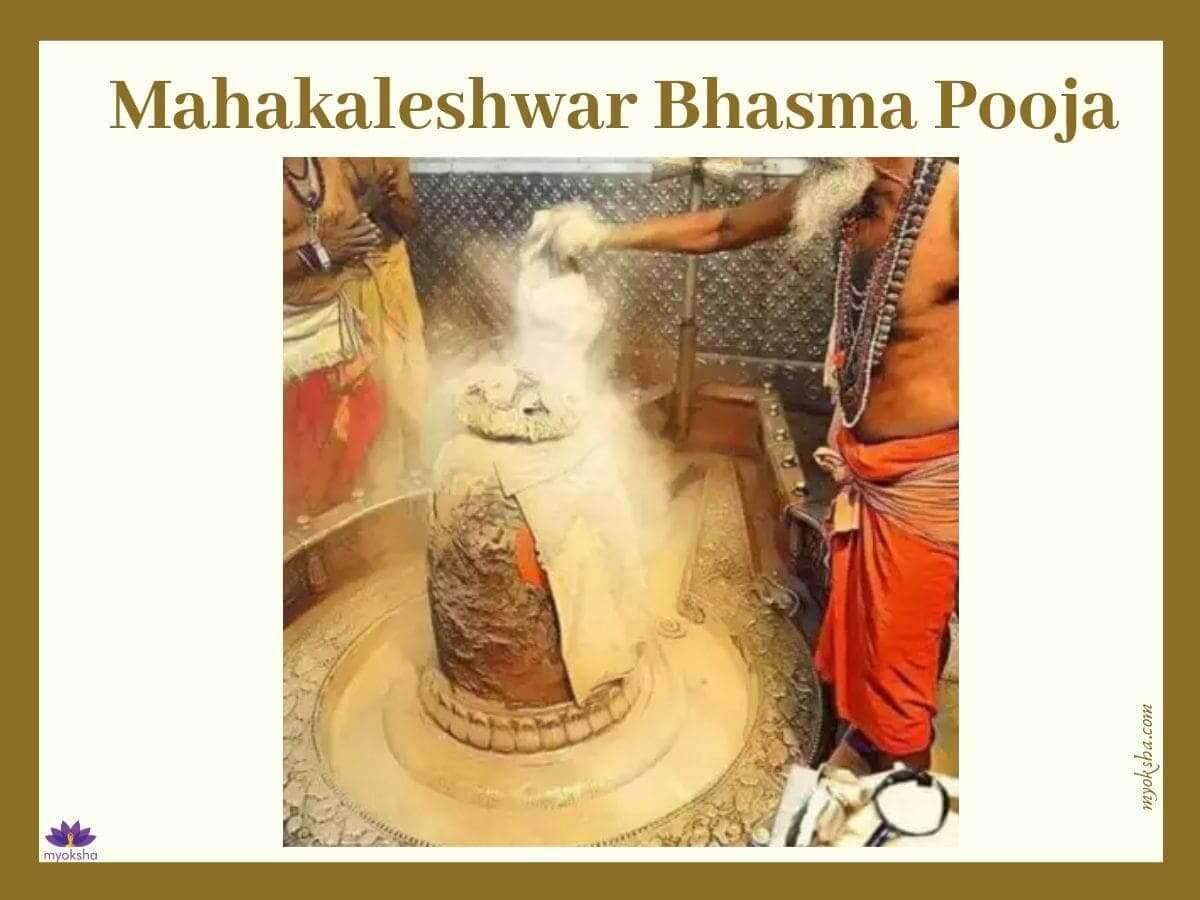
4. Omkareshwar and Mamleshwar Temple- Madhya Pradesh
The fourth sacred Jyotirling resides on the banks of the river Narmada. On a beautiful island, “Mandhata’ which is in the shape of an ‘Om.’
The significance behind Omkareshwar and Mamleshwar Jyotirling
There are three legends associated with the Omkareshwar temple. The first one is where Vindya Parbat performed penance, and his devotion appeased Lord Shiva. He blessed him to be greater than ‘Meru Parbat.’ The lingam worshipped by him was split into two parts, ‘Omkareshwar’ and ‘Mamleshwar,’ as appealed by the sages and gods.
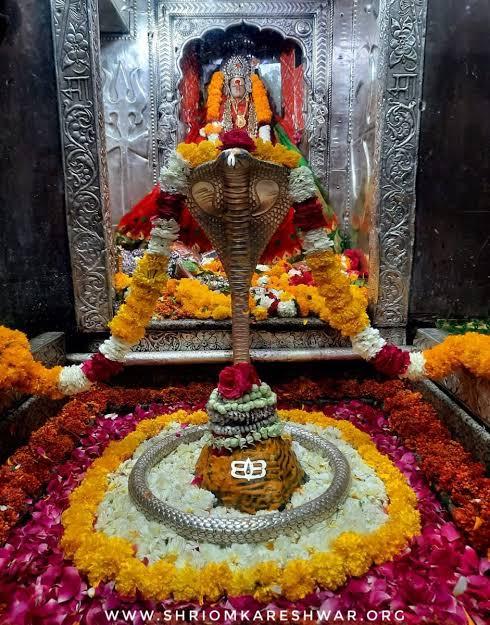
The second tale suggests how King Mandhata prayed to lord shiva along with his two sons and was blessed in the form of Jyotirlinga by Lord Shiva.
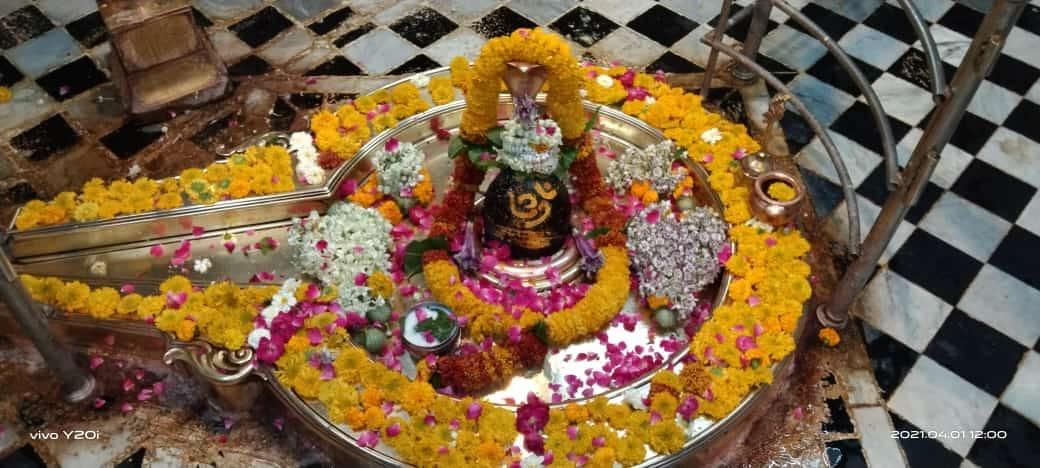
The third one says Lord Shiva defeated the Asuras during a gruesome war between Asuras and Gods and dwells in the firm of Omkareashwar Jyotirlinga.
5. Baidyanath Temple – Jharkhand
A mystical Jyotirlingam surrounded by 21 holy temples and located in Deoghar in the Santhal Parganas division. The shrine is decorated with precious gems. Not only that, but this place is home to the sacred shaktipeetha, where the body parts of Goddess Sati fell on earth.
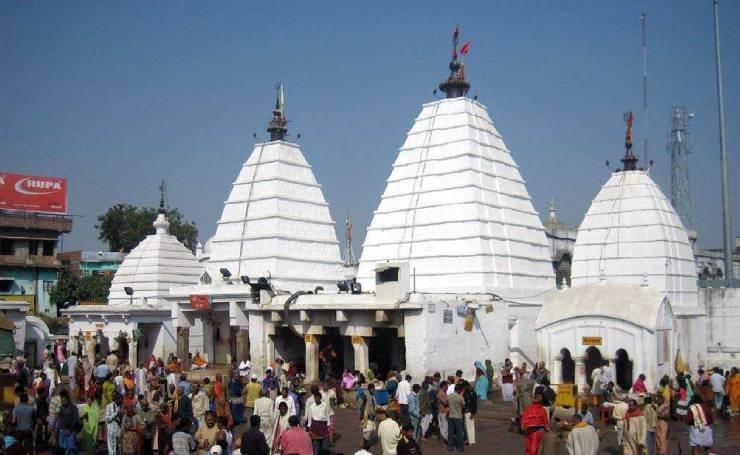
The chronology behind Baidyanath Jyotirling
One such popular legend says that Ravana sacrificed his ten heads to gain a wish from Lord Shiva. These heads are said to be then joined by Lord Shiva enacted like a Vaidya (Doctor). Thus, the name ‘Baidynath Dham’ emerged into existence. Offering Sadhana and prayers in the temple is found to bring prosperity and health to the individual.
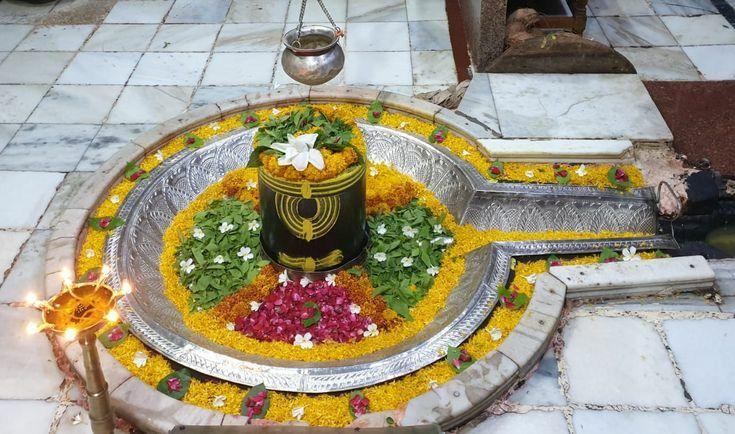
6. Bhimashankar Temple – Maharashtra
The sixth Jyotirlinga is the Bhimashankar Temple lies on the outskirts of a tiny village, Bhorgiri, among the Sahyadri hills in Pune. Nana Phadnavis rebuilt this temple in the 18th century. The garba griha of the temple allures the eyes with its splendid amalgamation of Rajasthani and Gujarati styles known as Nagara (Indo-Aryan architecture).

The chronology behind Bhimashankar Jyotirling
Hindu Puranas state how Lord Shiva took the Rudra avatar to kill the demon named Tripurasura. This demon was destroying the trilok Heaven, Hell and Nether world (Patal). After killing the asura, Lord Shiva rested on the hills of the Sahyadri and from his sweat arose the river Bhima. On several requests from the devtas, Lord Shiva stayed in the mountains in the form of Jyotirlinga.
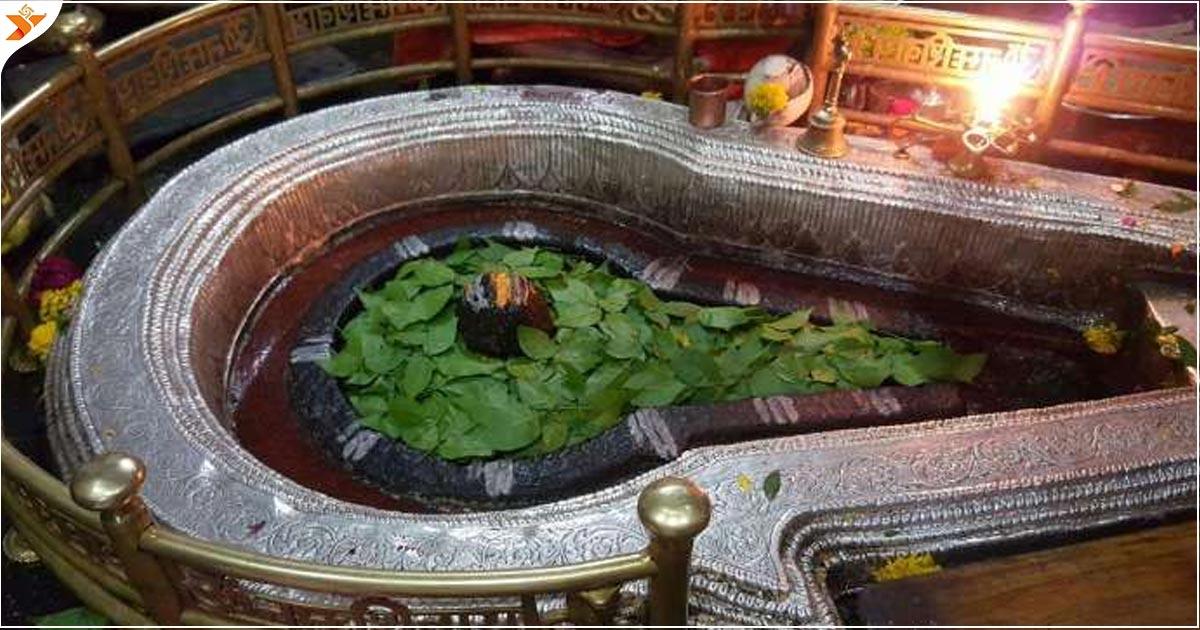
7. Rameshwar Temple- Tamil Nadu
This divine Jyotirling, located in the small town of Rameshwaram, holds immense devotion by Lord Rama for Lord Shiva. It is believed to be the stambha (pillar) of the neverending faith of Lord Rama. This temple is a fine example of marvellous architecture with majestic towers and lavishing corridors.
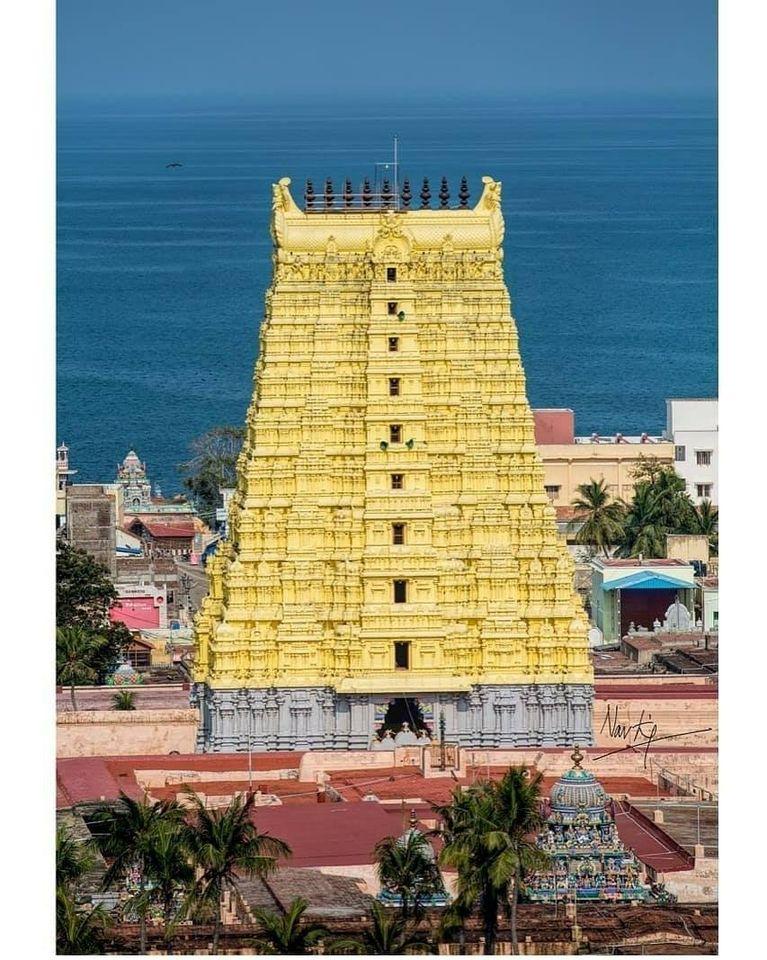
The chronology behind Rameshwar Jyotirling
Lord Rama built the Rameshwar temple, where he offered his homage to Lord Shiva, returning home after killing Ravana, who abducted his wife Maa Sita. Lord Rama instructed Lord Hanumana to bring the biggest Jyotirlinga from the mountain. As Bajrangbali took longer to return, Sita Maa constructed the Shivling with the nearby sand. Lord Rama prayed to Lord Shiva to wash off his sins after killing Ravana.
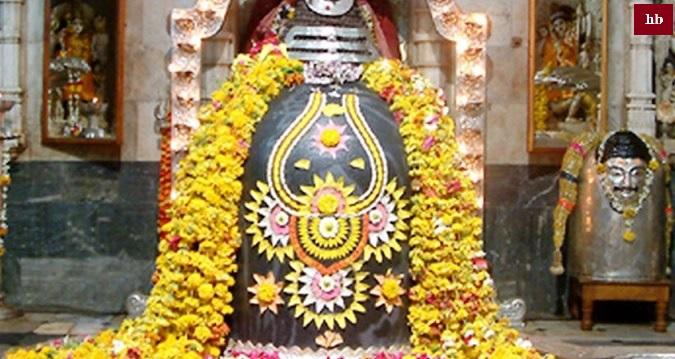
8. Nageshwar Mahadev Temple – Gujrat
This Jyotirlingam is situated in the heart of a town named Dwarka, one of the holy places of the Char Dham pilgrimage. This beautiful temple was renovated by Late Gulshan Kumar in 1996.
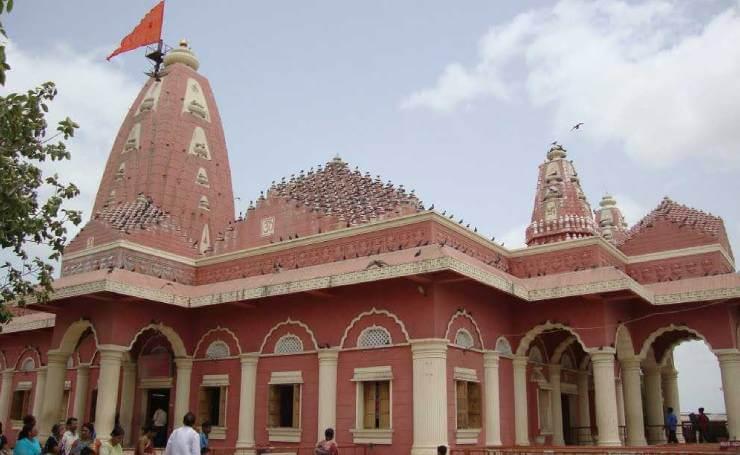
The chronology behind Nageshwar Mahadev Jyotirlinga
Once, an asura named Daruka was blessed by Goddess Parvati. This asura started troubling local people and imprisoned a great devotee of Lord Shiva named Supriya with few people.
On Supriya’s advice, everyone started chanting the holy mantra Om Namah Shivay. Daruka was angry hearing this and charged Supriya to kill her. Lord Shiva immediately appeared in the form of Shivling and rescued his devotee. It is said that since then, Lord Shiva has resided there in the state of Nageshwar Jyotiling.
9. Kashi Vishwanath Temple- Uttar Pradesh
In the holy city of Banaras, famous for its 2000 temples, resides a holy temple named Kashi Vishwanath. The Jyotirling was built somewhere back in the 11th century and later renovated by Rani Ahilya Bai Holkar in 1780. It holds significant importance to all its devotees who gather during Maha Shiv Ratri, Kartik Poornima and Makar Sankranti to seek the blessings of Lord Shiva.
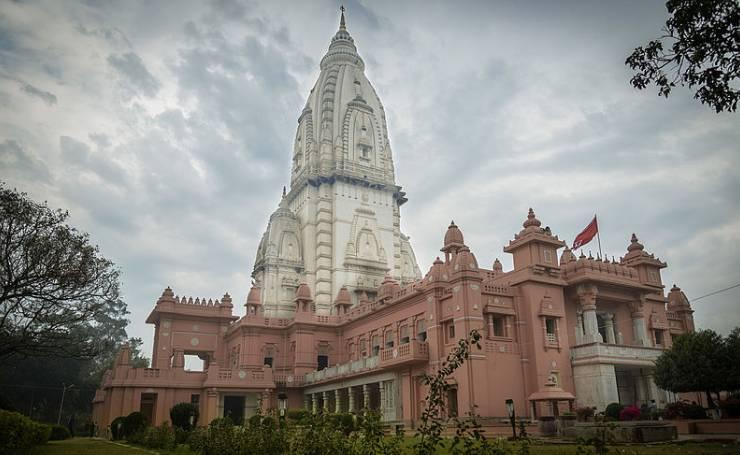
The chronology behind Kashi Vishwanath Jyotirling
As per the holy text, Shiva Puran Lord Shiva appeared in the form of an endless pillar of fire to stop the supremacy battle between Lord Brahma and Lord Vishnu. When Lord Bramha lied to Lord Shiva, he cursed him that he would remain unworshipped by anyone.
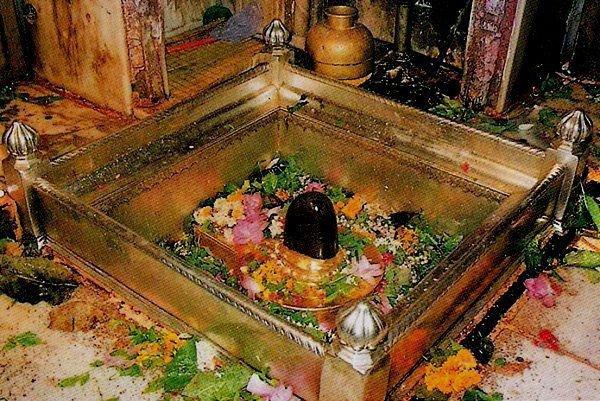
During this time, the pillars of fire vanished, but a tiny part of it was left behind, forming the Vishwanath Jyotirling.10. Trimbakeshwar Temple- Maharashtra
This three-faced Jyotirlingam is situated in a small town called Trimbak near Kashi. It is believed that one who seeks the darshan of the holy shrine attains the path to Moksha (Salvation). All their desires get fulfilled. A pond situated on the premises of a temple named Kushavarta is said to be the starting point of the Godavari River. This three-faced shivling depicts Lord Bramha, Lord Vishnu and Lord Shiva.
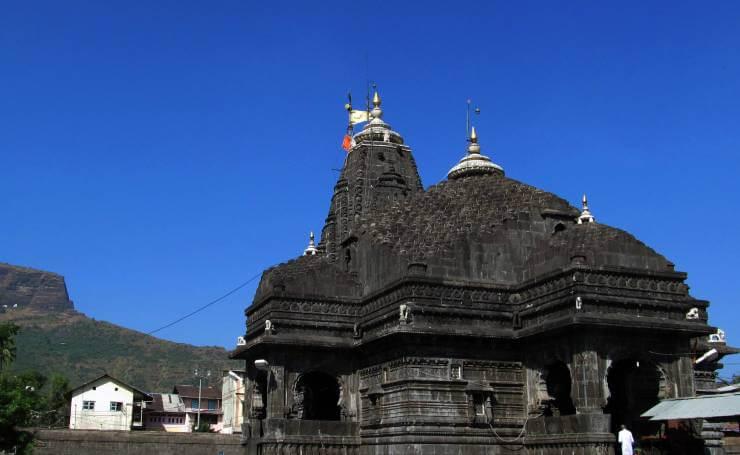
The chronology behind Trimbakeshwar Jyotirling
Once, in Rishi Gautam’s, a cow died. He decided to purify his sins by worshipping Lord Shiva and asked to send the River Ganga to wash off his sins. Ganga Maa flowed there in the name of Godavari River.
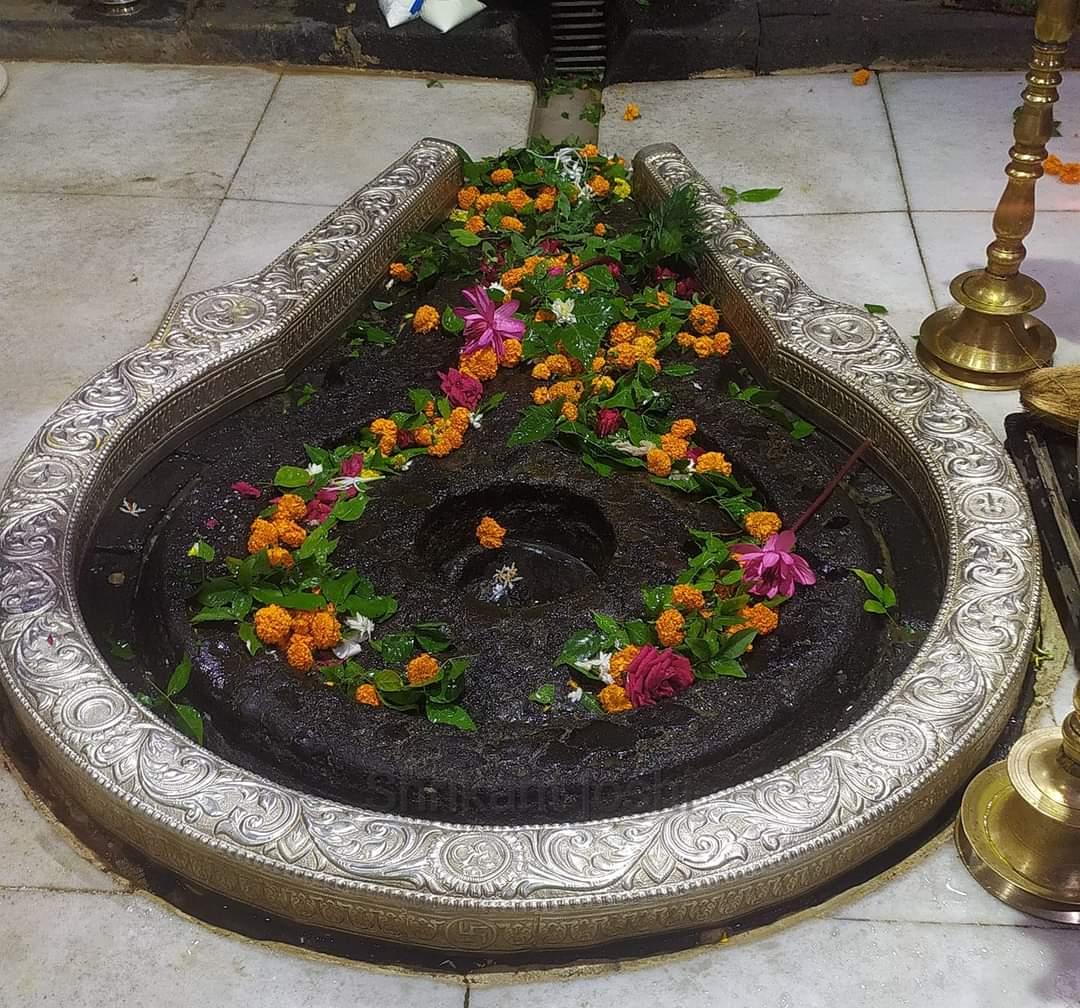
Thus, all the devas sang in praise of Lord Shiva and requested him to reside there in the form of Trimbakeshwar Jyotiling. Pilgrims who visit the place also take a dip in the Kushavarta pond to purify themselves of their sins.
11. Kedarnath Temple – Uttarakhand
A blessed jyotirling located in the hilly areas of the Himalayas covered in snowfall is believed to have been built during the Mahabharata times. On account of heavy snowfall, the Shivling is brought to the Ukhimath where the deity is worshipped during the month of winter. The idol is then reinstalled again in Kedarnath temple during the Vishakh Month as per the Hindu calendar. Pandavas initially built this temple and then reconstructed it by the Great guru Adi Shankaracharya.
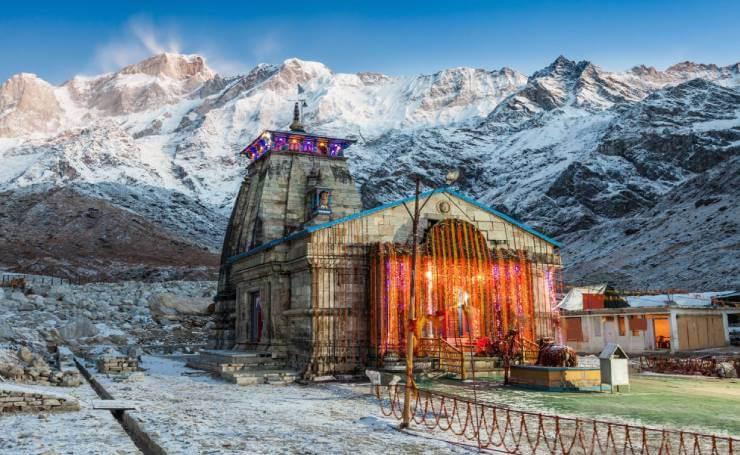
The chronology behind Kedarnath Jyotirling
As per Legends, the Pandavas performed penance to dissolve their sins, Lord Shiva, after their Mahabharat Battle to dilute their sins. Pleased by their tapa, Lord Shiva appeared in the form of triangular Jyotirling.
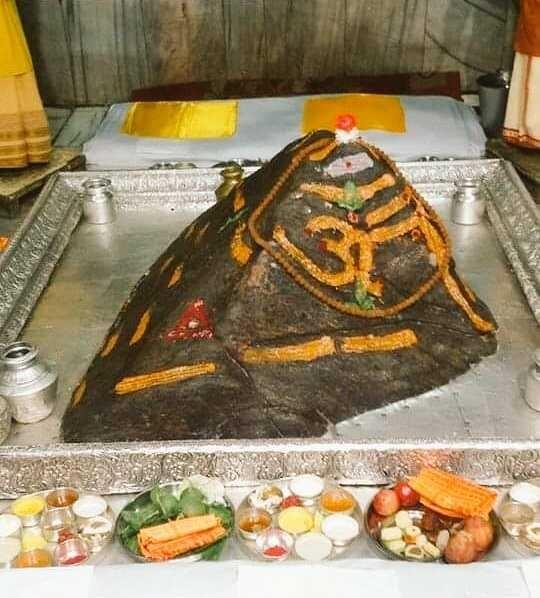
12. Grishneshwar Temple – Maharashtra
This Grishneshwar temple was built in the village of Verul, near Aurangabad late back in the 18th century. It is the last and smallest Jyotirling made of five-tier ‘shikara.’

The Chronology behind Grishneshwar Jyotirling
As per Shiv Puran, there was a great Shiva devotee named Grushma whose only son was killed by her sister. To combat her grievances, she sat in tapasya and prayed to Lord Shiva with a pure heart. Appeased by her devotion, Lord Shiva granted a second life to her son and brought him back from death. She wished lord Shiva to stay at her place. So Bhagwan Shiv resided there eternally in the form of Grishneshwar Jyotirlinga.
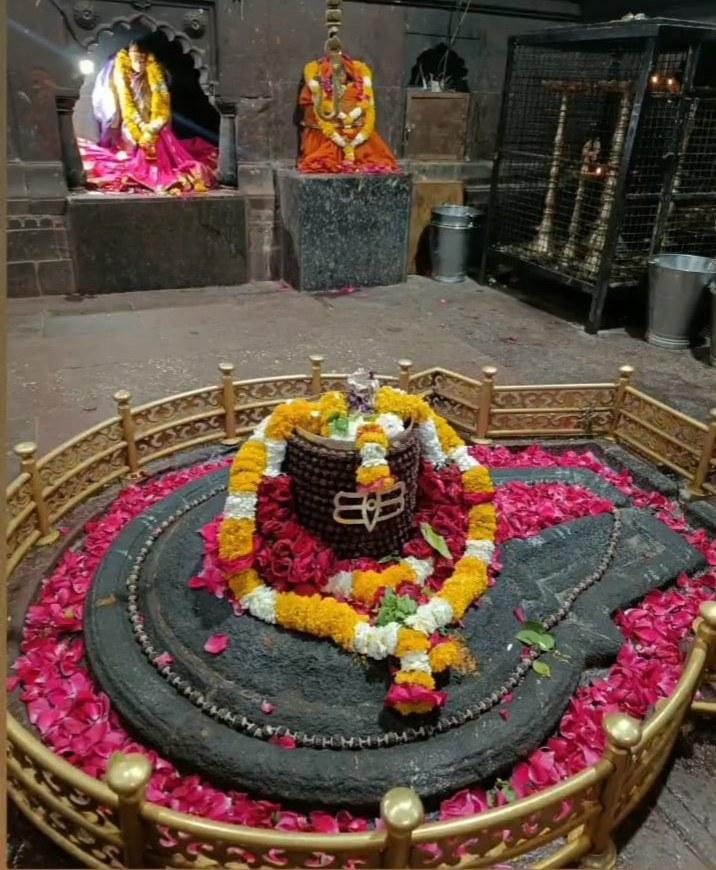
Pilgrims who seek darshan of all the 12 jyotirling are said to gain peace, prosperity and happiness in their life. All this helps the devotee to get rid of the obstacles in their life and leads them towards a more profound sense of understanding the spiritual world.
- This topic was modified 2 years ago by .
- This topic was modified 1 year ago by .
-
AuthorPosts
- You must be logged in to reply to this topic.